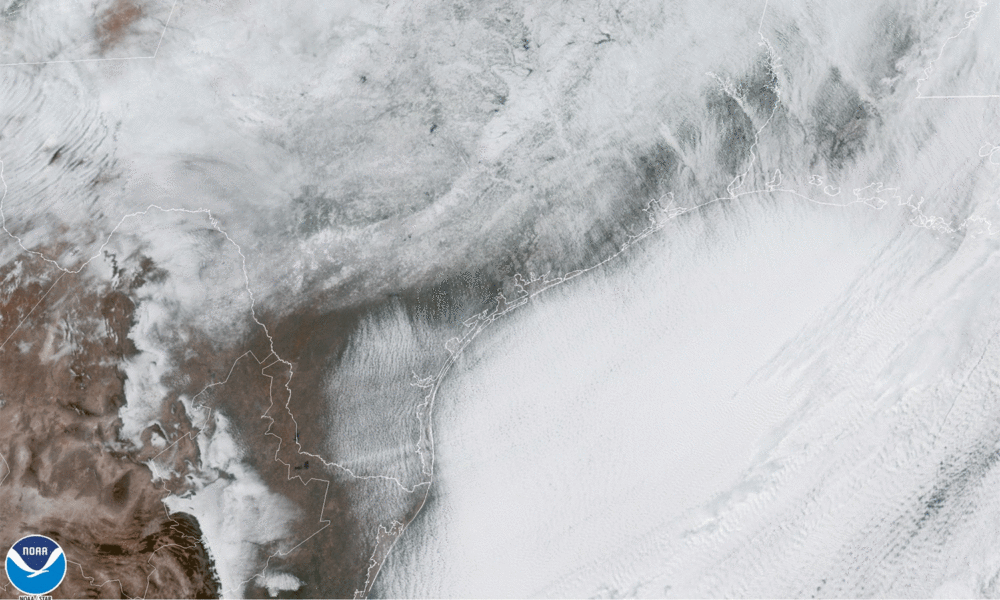As we watch most of the country being taken over by this polar vortex, we ponder whether climate change has anything to do with it, and if these extreme events will be more likely to happen in the future. We are transfixed at images coming from Texas, where the deep freeze took a hold of most of a state not used to it, and certainly not prepared for it. We hear about the energy outages, what caused them (and what didn’t), and what should be done to prepare for the next deep freeze.
However, when we think of that, the perspectives of people who are living through it all are an important component of the story that needs to be told.
My colleague Maegan Ramirez hails from El Paso and had a lot to say about the situation in Texas. I figured we should hear it in her own voice.
The winter storm of 2011
In February 2011, El Paso, Texas, was chilled by subzero temperatures and glittered under a sheet of snow three inches thick. This was deep in the heart of the Southwestern United States, where sunbaked cities cooled to a mild 60-70 degrees from November to March. I lived in El Paso when it was hit by the storm of 2011, and this week I have felt as if history is repeating itself.
At first when the storm of 2011 hit, I expected that snowfall to be like all the others that came before it—an unplanned day off accompanied by a chorus of neighborhood children building dirty, puny snowmen before the inch or two that had fallen the night before melted to brown slush. When the forecast warned of week-long single-digit temperatures, it made me and many of my fellow El Pasoans glad. Multiple snow days! A real winter at last! It was a hint of seasonal fun we so rarely got.
First people stayed home as much as possible by choice. After all, it was warmer and safer to do so. Then electrical and gas line failures left us in the dark. Pipes froze and water restrictions were imposed. We ate sandwiches, charged phones in episodes, and read books by flashlight, wrapped in layers of blankets. For me, it was largely an inconvenience.
Others didn’t have the luxury of being merely inconvenienced. Mothers kept their small children warm by sleeping in their cars. People flocked to various shelters. Some residents had to be rescued from their homes. Luckily, El Paso Electric, which is supported by the Western Interconnection, learned its lesson: they winterized their power plants in preparation for polar vortices to come.
The return of the vortex
As I write this, the deep freeze that revisited El Paso this week is thawing rather unremarkably—thousands of El Pasoans lost power briefly on Sunday compared with the millions of Texans who are closing in on their third day without consistent power. Unlike El Paso, most of Texas operates on the Electric Reliability Council of Texas (ERCOT) system, which offers no incentives for winter preparedness. In short, it’s a system that favors deregulation and cheap prices at the expense of reliable service and the health and safety of its customers.
As before, homes have gone cold. Water has to be boiled. People are charging their phones whenever they’re able. Children are being kept warm with car heaters. Medical devices have stopped working. And, amid a pandemic, COVID vaccination sites have closed.
This time, all of Texas was affected, including major cities like Dallas, Houston, and that fabled blue island nestled in a sea of red, Austin. Because these large metropolitan areas are being impacted, and not “just” border cities with a majority Latinx population, this miscarriage of energy policy has garnered widespread media attention.
The blackout shines a light on old inequities and new lies
The inequities in Texas are nothing new, but this fresh, larger focus on them is. As outages persist and the cascading consequences escalate, Austin’s celebrated downtown was kept alight while Austinites in surrounding neighborhoods fumbled in the cold dark. Dallas squandered its dwindling energy supply in much the same way—meanwhile, 24 Texans have lost their lives to exposure, carbon monoxide poisoning, or housefires.
Texans are cold, tired, scared, and angry. But far be it from fossil fuel companies and their allies to place blame where it belongs. Rather than addressing the dysfunction at ERCOT, “natural gas frozen in the pipeline,” and Texas’ abject avoidance of federal regulation, they’re peddling fear of renewable energy by sharing (old) pictures of wind turbines (in Sweden) being de-iced rather than focusing on real, fact-based solutions.
Not only is this blatantly false, but like ERCOT, this position ignores a bigger truth in favor of a short-term gain: continued reliance on an outdated power grid and natural gas system may remain in place for the foreseeable future, but what is the human cost? With climate changes, there will be more extreme weather events to come and people will need reliable, resilient power sources to survive them. What Texans—and all people—need is access to continuous, dependable, clean energy. They need smart investments in their safety and well-being in the face of a swiftly melting—or, in this instance, freezing—planet.
They don’t need false fears about clean energy repeated, retweeted, and shared by industry publicists and inept politicians. And what absolutely nobody needs is a senator who abandons his home state for sunnier skies while his constituents hope for warmth that lasts more than 40 minutes at a time.
Scrolling through social media, I see friends and acquaintances expressing gratitude that they no longer need certain medical devices during a time when they couldn’t have used them, concern about having to drive to pick up items they desperately need and questioning why they can’t just have light and running water already. Yes, why can’t they?

